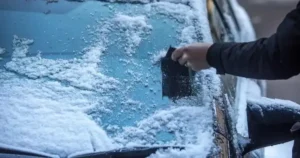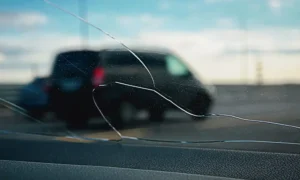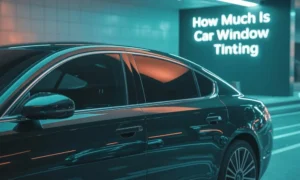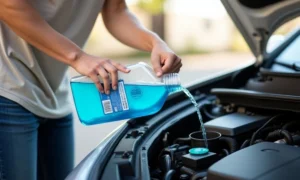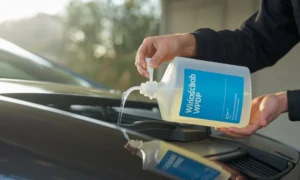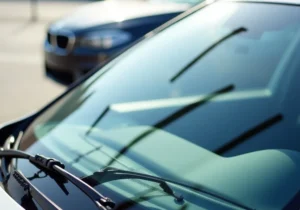Toyota Highlander windshield replacement is an important topic for anyone who owns this popular SUV. One important component of your car’s safety is the windscreen. It helps protect you during accidents, supports the roof, and allows clear vision while driving. Over time, windshields can get cracked or chipped due to flying rocks, harsh weather, or other impacts. If not fixed quickly, small cracks can grow and make driving dangerous.
Popular SUVs like the Toyota Highlander are renowned for their dependability, comfort, and size. Because it’s a family favorite and often used for long trips, keeping it in good shape—including the windshield—is important. Replacing a damaged windshield helps keep the vehicle safe and looking good, making sure you and your passengers stay protected on the road.
Toyota Highlander Windscreen Analysis (2005–2024)

Common Issues by Generation
1st Generation (2001–2007)
- Model Years: 2005–2007
- Common Issues:
- Basic windshield with no advanced features
- Cracks from small stones or sudden temperature changes
- Limited UV protection
- Repairs: Replacement is affordable; many use aftermarket glass
2nd Generation (2008–2013)
- Model Years: 2008–2013
- Common Issues:
- Slight improvement in durability
- Still prone to chips and cracks, especially on highways
- Some wind noise issues reported
- Repairs: OEM glass recommended due to better fit and noise control
3rd Generation (2014–2019)
- Model Years: 2014–2019
- Common Issues:
- Thinner glass in some trims made it easier to crack
- Start of sensors for rain detection (2016+)
- Problems if windshield is replaced with non-OEM glass (sensor misalignment)
- Repairs: Professional installation needed due to sensor recalibration
4th Generation (2020–2024)
- Model Years: 2020–2024
- Common Issues:
- Windshields equipped with multiple sensors for safety systems
- Expensive to replace
- Incorrect replacement can affect features like lane assist and emergency braking
- Repairs: Must use certified technicians for sensor alignment and calibration
Glass Specifications & Safety Features Over the Years
Year Range | Glass Type | Safety Features | Notes |
2005–2007 | Laminated glass | Basic UV protection | No sensors or smart tech |
2008–2013 | Laminated + Tinted | Better UV block | Still basic, minor safety features |
2014–2019 | Acoustic laminated glass | Rain sensors, UV protection | Start of ADAS tech in later years |
2020–2024 | High-tech laminated glass | Full ADAS support, heads-up display (HUD), soundproofing | Sensitive to replacement quality |
Windshield Sensor Integration in Newer Models (ADAS)
ADAS stands for Advanced Driver Assistance Systems – features that help the driver stay safe.
Key ADAS Features on the Windshield (2020–2024):
- Lane Departure Warning
- Forward Collision Alert
- Automatic Emergency Braking (AEB)
- Rain Sensors for Wipers
- Cameras behind the windshield (mounted near rear-view mirror)
- Heads-Up Display (some trims)
Why This Matters:
- The ADAS camera needs to be recalibrated whenever the windscreen is replaced.
- The sensors may become confused if the incorrect kind of glass is used.
- Always use OEM or OEM-approved glass in newer models to keep these features working properly.
Summary
- Older Highlanders (2005–2013) have simpler windshields—cheaper to replace, fewer features.
- Mid-generation (2014–2019) added basic sensors—replacements need more care.
- Newer Highlanders (2020–2024) have complex windshields with safety tech—must be handled by trained professionals.
- Always check for sensor compatibility and recalibration needs when replacing windshields in newer models.
Toyota Highlander Windshield Replacement Cost
The cost of replacing a Toyota Highlander windshield can vary depending on the model year, the type of glass used, and whether the vehicle has advanced features like sensors. On average, older models are cheaper to replace, while newer models with ADAS (Advanced Driver Assistance Systems) cost more due to sensor calibration and special glass.
Average Cost Range by Model Year
2005–2010 models: $200–$350 – These vehicles use basic windshields without sensors. Most replacements can be done using affordable aftermarket glass.
2011–2015 models: $300–$450 – Some of these models may include rain sensors or slight tinting, which can raise the price slightly.
2016–2019 models: $400–$700 – These Highlanders may have rain sensors, acoustic glass, and limited ADAS support in higher trims. Calibration may be needed after installation.
2020–2024 models: $700–$1,500+ – These come with fully integrated ADAS systems, including forward collision sensors and lane departure warnings. The windshields are often acoustic, UV-blocking, and include mounts for cameras. Replacements require professional calibration and OEM-quality glass.
OEM vs Aftermarket Glass
OEM (Original Equipment Manufacturer) glass is made by the same company that supplied Toyota during production. It ensures perfect fit, matches all factory features, and is compatible with ADAS sensors. OEM windshields are more expensive but are strongly recommended for newer models to maintain safety system accuracy.
Aftermarket glass is made by third-party companies. It can be significantly cheaper and is usually fine for older models that don’t use windshield sensors. However, using aftermarket glass on newer models may affect ADAS performance and require manual calibration, which adds cost.
Factors Affecting Pricing
- Sensors and Cameras: ADAS sensors behind the windshield, such as lane keep assist and collision detection, need to be realigned after replacement. This adds both time and cost.
- Tinting and UV Protection: Some models have factory tint or UV-blocking layers in the windshield, which are more expensive to replicate.
- Heating/Defrost Features: Certain Highlanders come with a heated windshield or wiper de-icer area. These features increase the cost of both the glass and installation.
- Glass Type (Acoustic or Standard): Acoustic glass helps reduce road noise and is typically more costly than standard glass.
- Labor Costs and Calibration Fees: Labor rates vary by location. Calibration of ADAS systems can cost an additional $100–$300, especially for 2020+ models.
Insurance Coverage for Toyota Highlander Windshields
Windshield damage is one of the most common issues for vehicle owners, and the good news is that many insurance policies cover it—depending on the type of coverage you have. Coverage can vary by provider and state, but here’s what most drivers can expect.
What Most Policies Cover
Most comprehensive auto insurance policies cover windshield repair or replacement due to things like flying debris, hail, vandalism, or falling objects. In many cases, small chips and cracks may be fixed for free, without a deductible. However, if the windshield needs full replacement, you may have to pay your deductible unless you have full glass coverage.
Some states (like Florida, Kentucky, and South Carolina) require insurers to cover windshield replacement with zero deductible if you have comprehensive coverage.
Liability insurance—the most basic type required by law—does not cover damage to your own windshield. It only covers damage you cause to others.
Comprehensive vs Liability-Only Coverage
- Comprehensive Coverage:
Covers damage to your windshield from non-collision events (e.g., rocks, weather, theft, vandalism). May offer full or partial reimbursement depending on your deductible. Optional, but necessary for windshield claims. - Liability-Only Coverage:
Does not cover your windshield. This type only pays for damage or injuries you cause to others. If you only carry liability insurance, windshield repairs or replacements will come out of your pocket.
Steps to File a Windshield Replacement Claim
- Check Your Policy
Review your insurance policy or call your provider to confirm if windshield damage is covered and what your deductible is. - Document the Damage
Take clear photos of the crack, chip, or shattered windshield. This helps with claim approval. - File a Claim
You can usually file online, through the insurer’s app, or by phone. Be ready with your policy number, the date of damage, and a description of what happened. - Choose a Repair Shop
Some insurers have preferred shops (like Safelite), but you can often choose your own as long as they’re certified. If ADAS recalibration is required, make sure the shop is equipped to handle it. - Schedule Repair or Replacement
Once approved, schedule your appointment. Many shops offer mobile service, so they can come to you. - Pay Your Deductible (If Any)
If you don’t have full glass coverage, you’ll need to pay the deductible amount before insurance covers the rest.
OEM vs Aftermarket Glass | Which to Choose?

When it comes to Toyota Highlander Windshield Replacement, one of the most important decisions you’ll need to make is whether to go with an OEM (Original Equipment Manufacturer) windshield or an aftermarket auto glass option. Both choices come with their own set of advantages and drawbacks, and understanding them can help you make the best decision for your vehicle’s needs, safety, and budget. Let’s discuss the OEM vs Aftermarket Glass windshield which one is better for your vehicle:
What is OEM and Aftermarket Glass?
An OEM windshield is the exact same windshield that came with your Toyota Highlander when it was first manufactured. It’s made by the original glass manufacturer and is designed to meet the specifications set by Toyota, ensuring it matches your vehicle perfectly. Aftermarket auto glass, on the other hand, is produced by third-party glass manufacturers and is intended as a cost-effective alternative to OEM windshields. Aftermarket windshields are often sold as original equipment equivalent, meaning they can function similarly to the OEM windshield but may not always meet the same quality and fit standards.
Pros of Choosing OEM Auto Glass
One of the primary benefits of selecting an OEM windshield for your Toyota Highlander is the guarantee of a perfect fit and compatibility. OEM auto glass is designed specifically for your vehicle model, ensuring that all safety features, including advanced driver assistance systems (ADAS), work seamlessly. ADAS features like adaptive cruise control and lane keeping assist often rely on sensors and cameras that are integrated with the windshield. With an OEM windshield, these sensors are correctly aligned, which is crucial for ensuring that your vehicle’s safety systems continue to function properly after the windshield replacement.
In addition to compatibility, OEM glass is typically held to higher safety standards, ensuring that your windshield is durable and strong enough to withstand impact. This can give you peace of mind knowing that your Toyota Highlander is equipped with the same high-quality glass that was originally installed at the factory.
Cons of OEM Auto Glass
While OEM windshields are known for their quality, they do come with a higher price tag compared to aftermarket options. For those on a tighter budget, the cost of replacing the windshield with OEM glass might be a concern. However, for many drivers, the extra cost is worth it for the added assurance of safety, quality, and compatibility with ADAS features.
Pros of Choosing Aftermarket Auto Glass
The most significant advantage of aftermarket auto glass is cost savings. Aftermarket windshields can be much more affordable than OEM glass, making them a popular choice for customers looking to replace their Toyota Highlander windshields at a lower price. Additionally, some aftermarket glass manufacturers offer high-quality replacements that meet safety standards and function well.
For drivers who don’t rely heavily on advanced safety features, or who have older models of the Toyota Highlander without complex ADAS systems, aftermarket auto glass may be a sufficient and budget-friendly option. If you’re only concerned with basic functionality and safety without the integration of advanced technology, aftermarket auto glass could be a practical solution.
Cons of Aftermarket Auto Glass
The main downside of aftermarket auto glass is that it may not perfectly match the OEM glass in terms of fit, finish, or long-term durability. While some aftermarket manufacturers produce high-quality glass, others may not meet the same safety standards, potentially affecting the performance of your windshield. Furthermore, aftermarket glass may not be optimized for advanced driver assistance systems such as adaptive cruise control and lane-keeping assist. This can lead to misalignments in the cameras and sensors mounted on or near the windshield, potentially affecting the operation of these crucial safety features.
Making the Best Choice
Choosing between OEM and aftermarket auto glass for your Toyota Highlander Windshield Replacement ultimately depends on your priorities. If safety, quality, and compatibility with ADAS features are your top concerns, then going with an OEM windshield is the best choice. It guarantees a perfect fit and ensures that all the safety systems in your Toyota Highlander, like lane keeping assist and adaptive cruise control, continue to function as they should.
However, if you’re looking for a more cost-effective solution and are willing to take on some risks regarding fit and integration with advanced features, aftermarket auto glass can provide a more affordable alternative.
We recommend considering both your budget and your vehicle’s specific needs when choosing between OEM and aftermarket glass. Our team can help you make an informed decision based on your Toyota Highlander’s requirements, ensuring you get the best value for your windshield replacement.
Final Thoughts
Replacing a windshield on your Toyota Highlander can vary in complexity and cost depending on the model year and features like ADAS sensors, tinting, or heating elements. Whether you drive an older Highlander or a newer one with advanced safety systems, it’s important to choose the right type of glass and a trusted installer to ensure everything works as it should. If you’re facing a cracked or damaged windshield and need expert help, Texas Reliable Auto Glass is here to assist you. We offer professional, high-quality windshield replacement services in Austin tailored to your Highlander’s specific needs—whether it’s a basic glass swap or a sensor-sensitive repair. Contact us today for fast, affordable, and reliable service you can trust. Call now or visit our website to book your appointment!
FAQS
How Much Does A Toyota Highlander Windshield Replacement Cost?
The cost typically ranges between $250 and $600, depending on factors like the choice of OEM or aftermarket glass, location, and any ADAS recalibration.
What Is The Difference Between Oem And Aftermarket Glass?
OEM glass is made by the original manufacturer, ensuring a perfect fit and compatibility with safety features. Aftermarket glass is a cost-effective alternative but may not always meet the same quality or fit.
Do I Need To Recalibrate Adas After A Windshield Replacement?
Yes, if your Toyota Highlander has advanced driver assistance systems (ADAS) like lane-keeping assist or adaptive cruise control, recalibration is necessary after windshield replacement.
Can I Get A Toyota Highlander Windshield Replacement At My Home Or Office?
Yes, Texas Reliable Auto Glass offers mobile auto glass services, bringing professional windshield replacement directly to your location in Austin.
Why Is Using Oem Glass Important For My Toyota Highlander?
OEM glass ensures a perfect fit, maintains the integrity of your vehicle’s safety features, and provides long-term durability, especially for ADAS systems.


